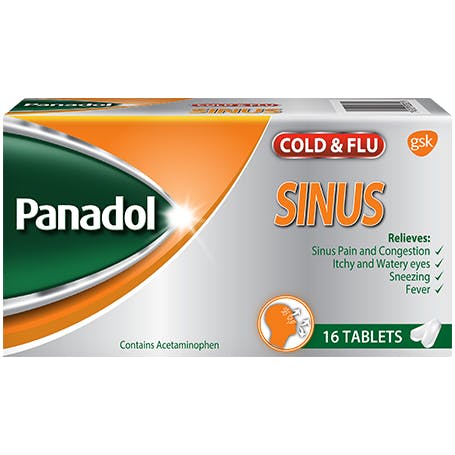
Cold & Flu
Everyone gets a cold from time to time. More than 200 different viruses can cause a cold, but the rhinovirus is the most common culprit. Its symptoms typically include runny nose and sneezing. A cold is not the same as the flu (influenza). Flu symptoms are more severe and can include a fever and shaking chills, aches and pains, lethargy and headaches.
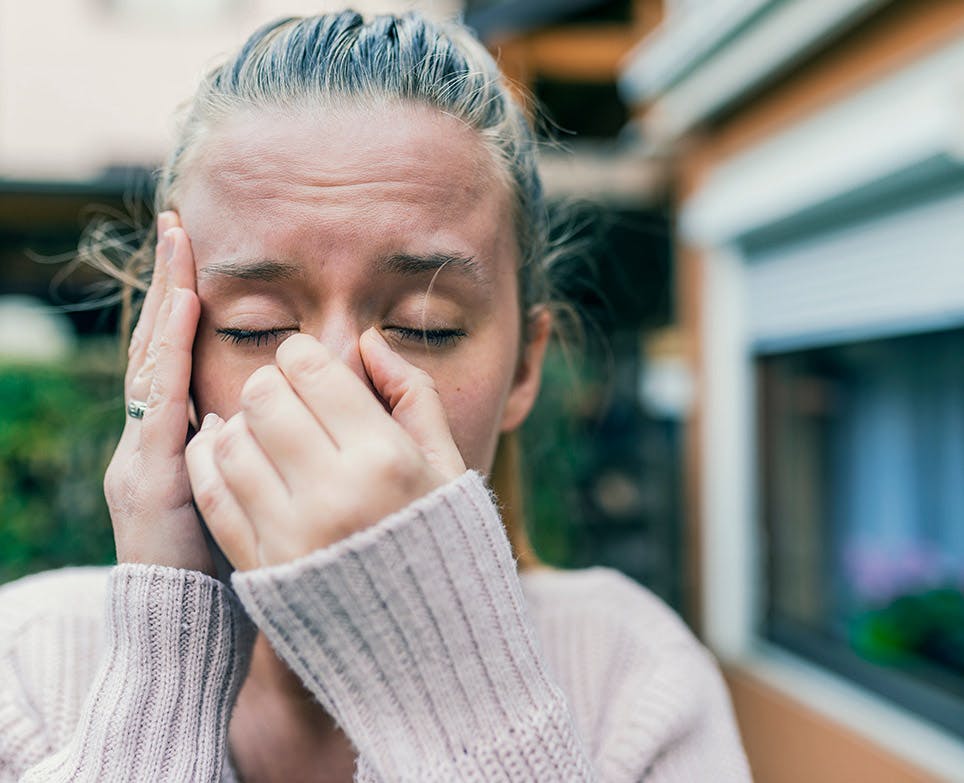
The causes and treatment of sinus pain
Sinus pain combines the familiar symptoms of a cold – like a stuffy or runny nose, sneezing, a sore throat and a cough – with pain and tenderness in the face.
Understanding the sinuses
The sinuses are actually four pairs of air-filled cavities in your head.21 Their role is to ensure the air coming in through the nose is at the right temperature and has the right water content before it goes to your lungs.22
When you have a cold or are suffering from allergies or hay fever, the inflamed nasal passages can cause congestion (stuffy nose). When these passages become blocked, bacteria and germs can grow inside the sinuses. This can result in facial pain (that feels worse when you lean forward), a sinus headache, a feeling of pressure inside the face and even toothache.22,23
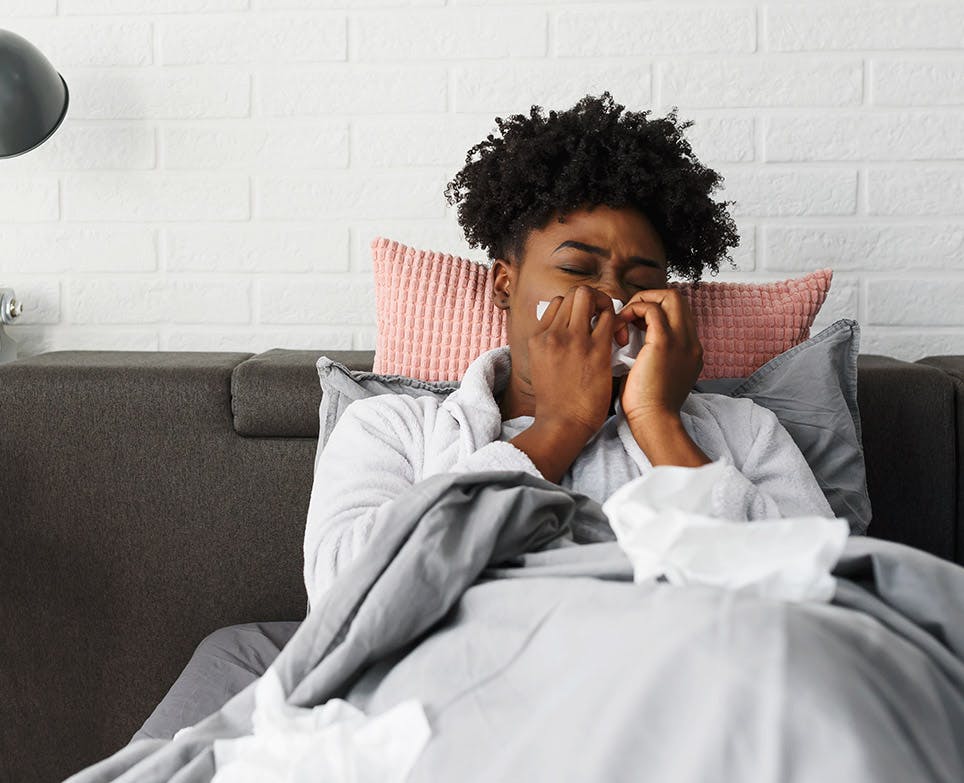
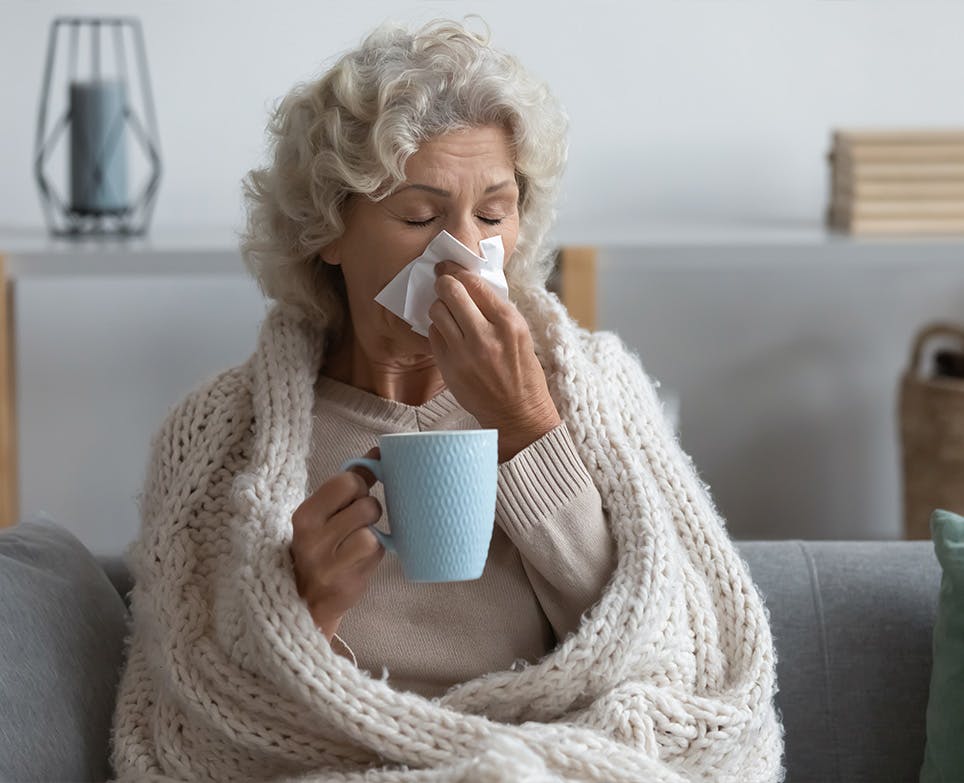
Tips to manage sinus pain
To ease sinus congestion and pain, there are a few things you can do:22,23
- drink plenty of fluids to help thin the mucus in the sinuses
- apply a warm, moist washcloth to the face several times a day
- use a steam inhalation two to four times a day – for example, inhale the steam from a bowl of hot water; place a towel over your head to keep the steam in
- avoid dry places and use a humidifier to keep the air moist
- use a saline spray several times a day as this can remove thick mucus and help the sinus to drain
- avoid things that can irritate the nose, such as cigarette smoke
- avoid sudden changes in temperature or bending your head down
Medication can also help. Pain relievers, such as acetaminophen or non-steroidal anti-inflammatory drugs (NSAIDs), can help to relieve sinus pain and headaches. Decongestants can ease a blocked nose and come in a number of forms such as drops, nasal sprays, tablets and powders that can be made into hot drinks.
Care needs to be taken with over-the-counter nasal spray decongestants as they can be helpful at first but may make the problem worse if used for more than three to five days. Some products are available that combine analgesics with decongestants to tackle sinus pain on both fronts.

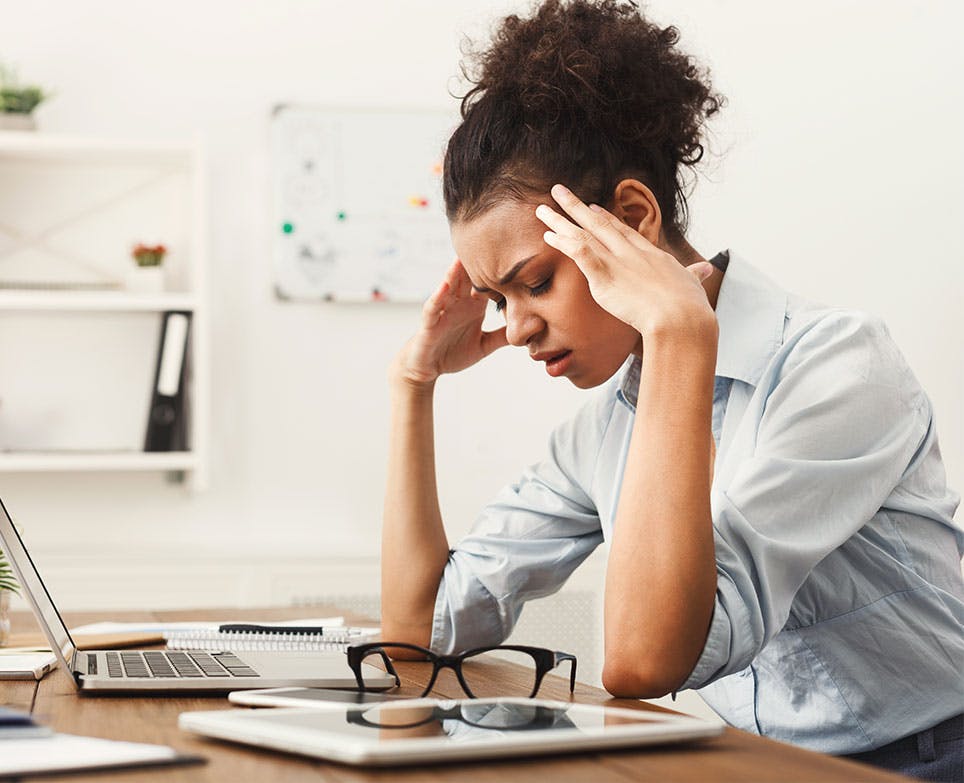
When to see your doctor
For most people, sinus pain will ease once the congestion has cleared up. If cold symptoms and sinus pain continue for 10 days or more, or the symptoms become worse within 10 days of the cold getting better, consult a doctor, who may discuss flu treatment with you.23





